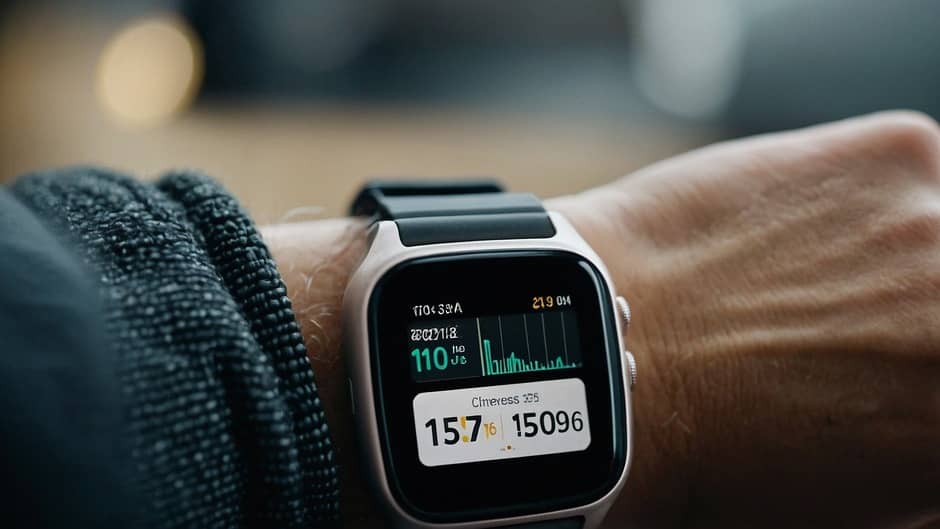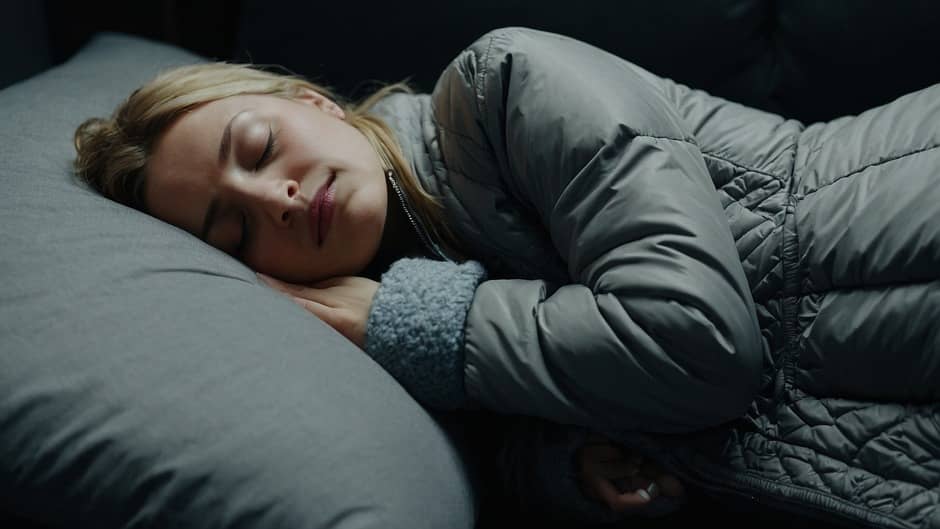Table of Contents
What’s a Tension Headache?
First, let’s make sure we all grasp the circumstances.
A frequent description of a tension headache is a dull, aching discomfort around the head, sometimes with a tightness or pressure feeling.
It feels like a bandage that is always irritating your forehead. Usually, pressure, an awkward posture, or tense muscles in your neck and shoulders cause these migraines.
Let’s see how to treat tension headaches at home?
Quick Relief Techniques
1. Pressure Points
Now, let’s talk about the pressure points.
You can relieve pain in these specific body regions by applying pressure. One well-known spot is the area between your thumb and index finger.
It’s similar to hitting the reset button to stop having headaches.
The following is how to make it happen:
- Find the Spot: Examine the webbing that connects your thumb to index finger. Seek for any areas that are numb.
- Apply Pressure: Using the thumb and index finger of the other hand, apply a light but firm pressure to this spot. You may wish to use your thumb to create tiny, circular movements.
- Keep Going: Do this for thirty seconds or so. Repeat as needed, but with gentleness. Your goal is to relax the muscles and improve blood flow.
This simple process can occasionally provide immediate relief by lowering muscular tension and advancing the healing process.
2. Deep Breathing
Stress can dramatically worsen tension headaches. Deep breathing exercises are an excellent technique to de-stress and unwind. Try these breathing techniques:
- Get Comfortable: Locate a peaceful area where you can lie down or sit comfortably.
- Inhale Deeply: Inhale slowly via your nose and fill your lungs completely. Count to four as you take a breath.
- Hold the Breath: At the pause, hold your breath for four counts.
- Exhale Slowly: Breathe out fully through your mouth for around six seconds.
- Repeat: Continue doing this for some time.
Deep breathing can help reduce the pressure that is aggravating your brain ache and calm your sensory system.
3. Neck and Shoulder Massage
Tension headaches are usually caused by tense muscles in the neck and shoulders. A quick self-massage could be helpful:
- Position Yourself: Depending on your preference, stand or sit.
- Massage Your Neck: Using your fingertips, gently massage the muscles located at the back of your neck. Make little circular movements with your fingers and apply moderate pressure.
- Work on Your Shoulders: Proceed to massage your shoulders, paying special attention to any tense spots.
This helps to relax tense muscles and could improve blood flow, both of which could reduce headache pain.
4. Warm Compress
A warm compress can significantly aid in the release of muscle tension:
- Prepare the Compress: Soak a cloth in warm water and wring the excess out. Warm but not hot is what’s needed.
- Apply the Compress: Your head or neck can be wrapped in the heated towel.
- Relax and Enjoy: Allow it to run for ten to fifteen minutes. Warmth has the ability to relieve sore muscles and improve blood flow to the affected area.
Also Read – Everyday Activities That Count As Exercise – Everyday Physical Activities Examples (2024)
5. Stay Hydrated
Sometimes, headaches are a sign of dehydration. If you haven’t drank enough water today, a glass could be helpful.
Dehydration can induce headaches, therefore it’s important to stay hydrated.
Eight glasses of water or more should be consumed daily if you’re active or in a hot environment.
6. Take a Break and Stretch
In the unlikely event that you have been employed at a location for a considerable amount of time, taking breaks is important.
Stretching can help release the tension that has accumulated:
- Stand Up: Stand up and stretch for a few seconds.
- Arm Stretch: Extend your arms above your head and reach as high as you can.
- Neck Stretch: Slant your head gently from side to side, holding each position for a few seconds.
Stretching can assist release tense muscles and provide a respite from demanding positions.

When to See a Doctor
If you have tension headaches frequently or in especially bad situations, it’s a good idea to see a doctor.
They can help with the diagnosis of any underlying problems and offer more tailored guidance.
There you have it, a number of useful methods for treating a tension-related headache. Whether you apply pressure points, deep breathing, a warm compress, or simply take a little stretch, these methods can help.
The next time you start to have a headache, try these, and maybe you’ll receive some relief.
1. Relaxation Techniques
Let’s start by discussing relaxation techniques. Stress frequently triggers tension headaches.
One of the greatest methods to handle this is to practice relaxation techniques.
Starting with deep breathing is the best course of action. Sit or lie down in whatever position feels comfortable for you. Shut your eyes and inhale deeply, slowly.
Hold for four counts, then take a deep breath through your nose, gently release it through your mouth for four counts, and repeat.
According to study, this may help reduce stress and muscle tension, which may help relieve your headache.
You can also attempt progressive muscular relaxation.
This involves tensing and then progressively releasing your body’s various muscle groups, starting from your toes and working your way up to your head.
By doing this, the physical strain that results in headaches can be reduced.
2. Good Posture
Now let’s talk about posture. An unfortunate posture can cause pressure in the shoulders and neck, which can trigger migraines.
If you spend a lot of time sitting down, especially at a desk, make sure your chair supports your lower back and your computer screen is at eye level.
Maintain a comfortable posture and avoid slouching your shoulders.
These kinds of small changes can make a big difference in the prevention of headaches.
3. Hydration
It’s important to stay hydrated.
Sometimes, headaches are a sign of dehydration.
Make sure that you drink enough water all day long. The general recommendation is eight 8-ounce glasses of water each day, but if you’re active or in a warm location, you may need more.
Reducing your migraine frequency can be achieved by regularly consuming water.
4. Regular Exercise
Practice can relieve strain-related headaches in addition to helping you stay in shape.
Frequent exercise promotes general wellbeing and reduces stress. Walking, swimming, and yoga can all be quite helpful.
In particular, yoga combines stretching and relaxing techniques that might help relieve tightness in your muscles.
Also Read – Healthy Foods For Everyday Life – 15 Immunity Boosting Foods To Build A Healthy Life (2024)
5. Massage
A quick massage can be quite relaxing.
You can try rubbing the base of the skull, your temples, and your neck and shoulders.
By promoting circulation and releasing muscle tension, massage has been demonstrated to help reduce the pain associated with tension headaches.
If you’d like, you can also see a licensed massage therapist for targeted relief.
6. Warm or Cold Compresses
Applying a warm or cold compress to the back of your neck or your forehead may provide some relief.
To make a warm compress, use a heating pad or warm towel. For a cold compress, wrap some ice in a cloth and place it over the area that hurts the most. Either way, stiff muscles can be released and headache discomfort can be reduced.
To find the one that works best for you, try both.
7. Healthy Eating
Recall the importance of nourishment. Eating balanced meals helps prevent headaches.
Regular dinners that include a good balance of whole grains, organic produce, lean meats, and carbohydrates help maintain stable blood sugar levels, which reduces the risk of migraines.
Avoid eating sugary foods, skipping meals, and consuming excessive amounts of coffee.
8. Adequate Sleep
Getting enough restful sleep is another crucial component.
Strive for the extended intervals of rest each evening.
Headaches may arise from increased tension and stress brought on by sleep deprivation. Make sure your sleeping space is cozy, create a calming evening ritual, and stick to a regular sleep schedule.
9. Mindfulness and Meditation
Lastly, mindfulness and meditation may be effective strategies for reducing stress and anxiety. These techniques help you stay in the present moment and reduce anxiety, which can help prevent pressure headaches.
A small amount of time each day can have a significant impact.
Read us on Medium.




